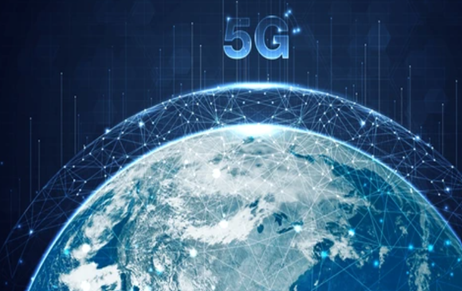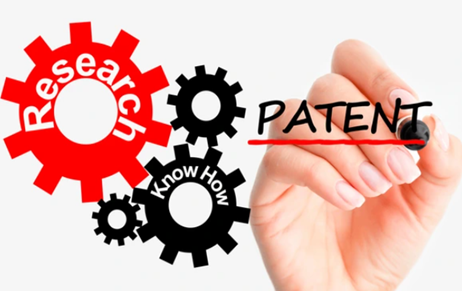The fifth generation of wireless technology (5G) is a transformative leap in mobile communications. This…
Interpretation of Section 31 of Indian Patents Act, 1970
While the focus of the article is specifically on the interpretation of section 31, mentioning other relevant sections of the act and trying to understand the purpose of section 31 will help us interpret the section 31 correctly. Chapter VI of the Indian Patents Act, 1970 titled ‘Anticipation’ sets out the circumstances that are not anticipation. Section 34 of the act titled ‘No anticipation if circumstances are only as described in sections 29, 30, 31 and 32’ makes it clear that if circumstances are different from that described in sections 29, 30, 31, and 32, then they would cause anticipation. Section 13 titled ‘Search for anticipation by previous publication and by prior claim’ deals with circumstances which can be considered anticipatory, to which circumstances as described in section 31 form exception. In order to interpret ‘application for the patent’ in section 31, consideration of section 7 and 138 is important. It is also necessary to interpret section 31 in light of relevant case studies.
Because the questions which need to answer for correct interpretation of section 31 are many, it will be important that we address them one by one.
Questions which need to be addressed are:
- What is the intent behind section 31?
- Regarding the interpretation of the terms ‘learned society’ and ‘transaction’ in section 31:
- What is the scope of the terms ‘learned society’ and ‘transaction’ in section 31?
- Is a similar provision available under the patent laws of other countries?
- Are these terms defined under the laws of India or other countries?
- What do relevant case studies point out?
- If any enabling disclosure is made available to the non-members of a ‘learned society’ either free or on payment of fees, will it constitute anticipation?
- Is the publication of the transaction of learned society on the internet anticipatory?
- Does ‘application for the patent’ also include conventional application and international applications?
- What is the intent behind section 31?
As the section starts with ‘An invention claimed in a complete specification shall not be deemed to have been anticipated by reason only of’, the section has been written in negative language. Section 31 is one of the sections included in chapter VI, which sets out the circumstances which are exceptions to the circumstances considered as anticipatory under section 13. Section 34 of the act titled ‘No anticipation if circumstances are only as described in sections 29, 30, 31 and 32’ makes it clear that if circumstances are different from that described in sections 29, 30, 31, and 32, then they would cause anticipation. For interpretation of this section, it should be kept in mind that any broad (unreasonably) interpretation will broaden the scope of exceptions the anticipation, and on the other hand, we opt for restrictive interpretation then it should at least serve the purpose of the section. Had the section 13 begun with ‘Notwithstanding anything’, we would have interpreted the section 13 independent of section 31, and had the section 13 begun with ‘Subject to anything’, we would have allotted key player’s roles to section 31. Because of the absence of this, interpretation is not straightforward.
- Regarding the interpretation of the terms ‘learned society’ and ‘transaction’ in section 31:
- What is the scope of the terms ‘learned society’ and ‘transaction’ in section 31?
- Is a similar provision available under the patent laws of other countries?
- Are these terms defined under the laws of India or other countries?
- What do relevant case studies point out?
- If any enabling disclosure is made available to the non-members of a ‘learned society’ either free or on payment of fees, will it constitute anticipation?
- Is the publication of the transaction of learned society on the internet anticipatory?
For the sake of convenience and better understanding, all questions from a to e regarding the interpretation of the terms ‘learned society’ and ‘transaction’ in section 31 are answered together.
It is pertinent to note that patent acts of India and the UK are silent on the definitions of ‘learned society’ and ‘transaction’. Even no decision by a court in India has interpreted these terms. The reason for not defining these terms seems to be the requirement to define the threshold for ‘learned’. Australia, New Zealand, Singapore, and Israel also have a similar provision in patent laws that exempt the publication in transactions of the society from being considered for the purposes of novelty and obviousness. In Ethyl Corporation’s Patent (1963 RPC155) and Ralph M. Parsons Application (1978 FSR 226), UK courts have interpreted these terms in a restrictive manner. Ralph M. Parsons Application suggests that a “learned society” is any non-commercial body of persons seeking to promote and organize the development of specific subjects by the provision of a forum for the exchange and discussion of ideas and the dissemination of information, usually through the publication of its proceedings.
As we move ahead to understand the effect of the word ‘transaction’ on the scope of section 31, we have to appreciate that the mere presence of the word ‘transaction’ reduces the scope of the exceptions provided by section 31 to the anticipation. Further, we need to note that the language of the section is ‘published with his consent in the transactions of such a society’ not ‘published with his consent of the transactions of such a society’. It suggests that any interaction of the ‘learned society’ that has qualified to be described as ‘publication in the transactions of society’ will fall within the scope of section 31 and will not constitute the anticipation.
A question that might sound interesting to many, of course, it interests me, if any enabling disclosure is made available to the non-members of a ‘learned society’ either free or on payment of fees, will it constitute anticipation or not. The answer to this question to me is ‘yes’ and the reason is, the moment the enabling disclosure is made available to the non-member, it is no longer ‘publication in the transactions of society’. This is also consistent with the interpretation adopted by the UK court in Ethyl Corporation’s Patent and Ralph M. Parsons Application. In Ethyl Corporation’s Patent court held that transaction meant ‘published record of the proceedings of the learned society’. In Ralph M. Parsons Application, the reporters present at the meeting of the learned society where the inventor read the paper, got a copy of the paper, and published the subject matter. The argument of the inventor that the subject matter was published in effect reporting the proceedings of that learned society was rejected and circulation of the paper and publication was held to be anticipatory. The judgment also sets out that “An essential prerequisite of a publication, if it is to be regarded as “transactions” is that it should be published under the auspices of and finally be the responsibility of the Association—the learned society—whose organ of publication it is.”
Another interesting question yet to be considered by courts is whether the publication of the transaction of learned society on the internet anticipatory or not. Applying the logic of subject matter being extended to non-members of the learned society, this appears to be anticipatory.
Finally to conclude, any interaction of the learned society for benefit of the non-members of the society will be termed as an anticipatory publication. The purpose of the subsection 31 (d) is to provide an opportunity to the inventors to disseminate the knowledge to the members of the society and it should not be interpreted to mean that one can publish a research paper from the date of which patent application is to be made not later than twelve months. It is recommended that one should file a patent application and then publish a research paper.
- Does ‘application for the patent’ also include conventional application and international applications?
While the UK courts interpreted corresponding sections in the act to exclude the conventional and PCT applications, laws relating to PCT applications in India need to be interpreted considering section 7 and 38 which clearly set out that ‘Every international application under the Patent Cooperation Treaty for a patent, as may be filed designating India shall be deemed to be an application under this Act, if a corresponding application has also been filed before the Controller in India.’ For the clarity on whether base applications of convention application filed in India are to be covered under the scope of section 31 or not, no explicit provision has been given.
About the Author: Swapnil Patil, Patent Associate at Khurana & Khurana, Advocates and IP Attorneys and can be reached at swapnil@khuranaandkhurana.com



